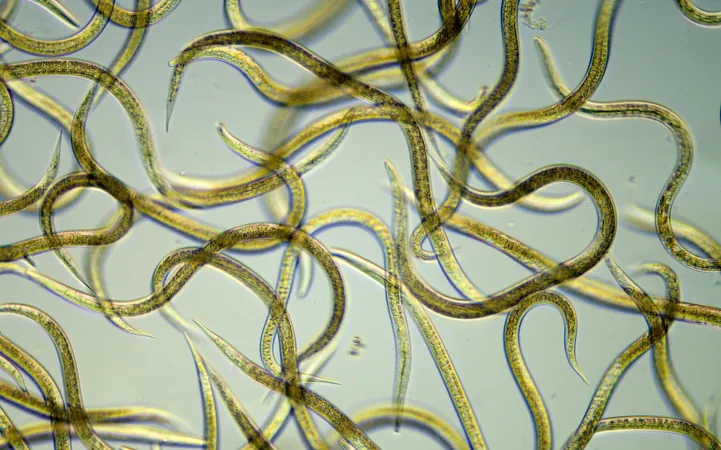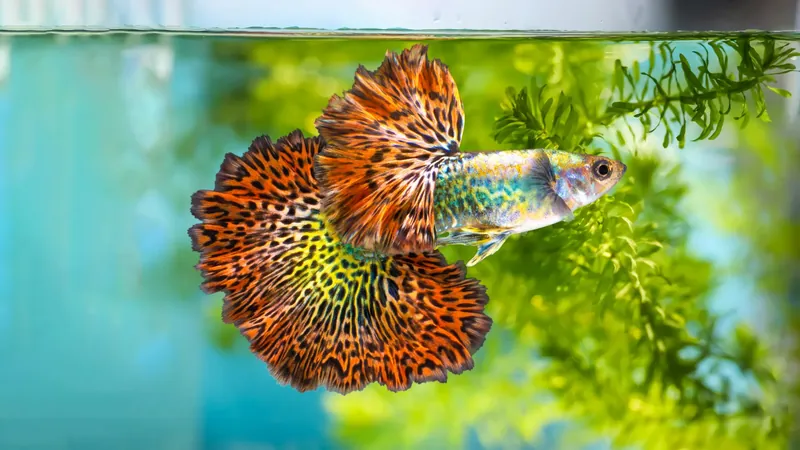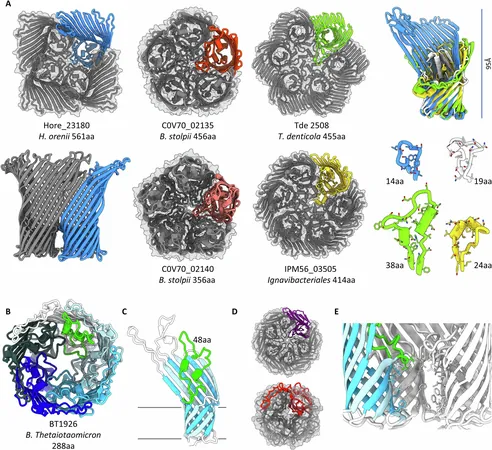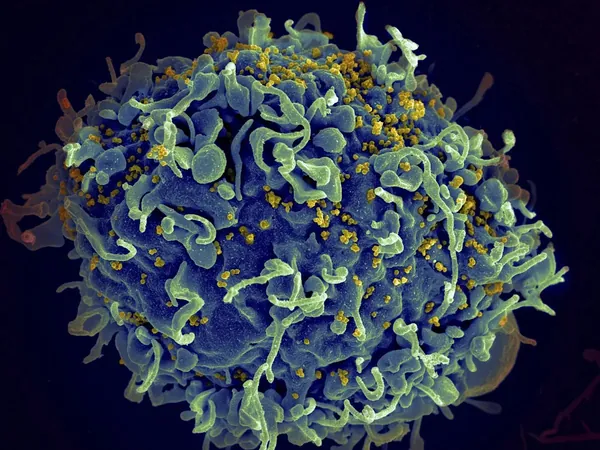
Mystery of the Worm Towers: How Nematodes Build Baffling Living Structures
2025-06-07
Author: Liam
Once thought to exist only in a lab setting, the astonishing phenomenon of "worm towers" has now been observed in nature, captivating scientists around the world. An international team has captured groundbreaking evidence of nematodes forming vertical, living structures within decaying fruit in German orchards, a behavior that once seemed the stuff of myth.
Worm Towers Step into the Wild
For years, researchers speculated about the possibility of nematodes constructing these intricate formations in their natural habitats—but concrete evidence was elusive. That is, until researchers from the Max Planck Institute of Animal Behavior and the University of Konstanz made an exciting discovery. Senior researcher Serena Ding expressed her joy upon witnessing the first real-life "natural towers," saying, "For so long, these natural worm towers existed only in our imaginations!"
Ryan Greenway, a dedicated technical assistant, spent months examining rotting apples and pears with a digital microscope. His efforts bore fruit when he observed worms creating stunning clusters, which were then studied in the lab. To their surprise, the towers were formed exclusively by one type of nematode in a resilient, immobile larval state.
More Than Just Worm Piles
As explained by Daniela Perez, the study's first author, "A nematode tower is not just a pile of worms; it’s a coordinated structure, a superorganism in motion." Individually, these dauer-stage nematodes can grasp onto passing animals to hitch rides to new environments, but as part of a tower, the collective can achieve the same feat with impressive efficiency.
The towers demonstrated responsive behavior, detaching from surfaces and even climbing onto insects like fruit flies, showcasing an extraordinary level of group movement.
Remarkable Discoveries in the Lab
To delve deeper, Perez replicated the phenomenon in controlled conditions using Caenorhabditis elegans, a widely studied nematode. Within just two hours, the starved worms formed stable towers that lasted over 12 hours, sometimes developing exploratory "arms" to extend into their surroundings.
"The towers are actively sensing and growing," Perez noted. "When we touched them, they responded immediately, adjusting their growth towards the stimulus."
The Evolution of Cooperative Behavior
Interestingly, while only the dauer-stage worms formed towers in the wild, the lab experiments showed that adult and other larval stages participated as well. This indicates that the behavior may be more widespread and adaptable than previously thought.
In these towers, all worms exhibited similar mobility and fertility, hinting at an egalitarian structure. The researchers speculated about the implications of mixed genetic compositions in natural towers, raising intriguing questions about cooperation and competition among individual worms.
Worm Towers: A New Model for Collective Motion
This discovery places nematodes alongside other remarkable organisms like slime molds and fire ants in the realm of collective motion through body-linking. It opens up new avenues for research into how and why animals move as groups.
"Our study introduces a whole new system for understanding collective dispersal," Ding emphasized. With the genetic tools available for C. elegans, researchers have a powerful model to study the evolution of cooperative behavior.
What was once a lab curiosity has emerged as a natural marvel, illuminating how even the smallest creatures can unite to navigate and thrive in their environments. The study has been published in the journal Current Biology, and it promises to unveil more secrets of group behavior in the natural world.









 Brasil (PT)
Brasil (PT)
 Canada (EN)
Canada (EN)
 Chile (ES)
Chile (ES)
 Česko (CS)
Česko (CS)
 대한민국 (KO)
대한민국 (KO)
 España (ES)
España (ES)
 France (FR)
France (FR)
 Hong Kong (EN)
Hong Kong (EN)
 Italia (IT)
Italia (IT)
 日本 (JA)
日本 (JA)
 Magyarország (HU)
Magyarország (HU)
 Norge (NO)
Norge (NO)
 Polska (PL)
Polska (PL)
 Schweiz (DE)
Schweiz (DE)
 Singapore (EN)
Singapore (EN)
 Sverige (SV)
Sverige (SV)
 Suomi (FI)
Suomi (FI)
 Türkiye (TR)
Türkiye (TR)
 الإمارات العربية المتحدة (AR)
الإمارات العربية المتحدة (AR)